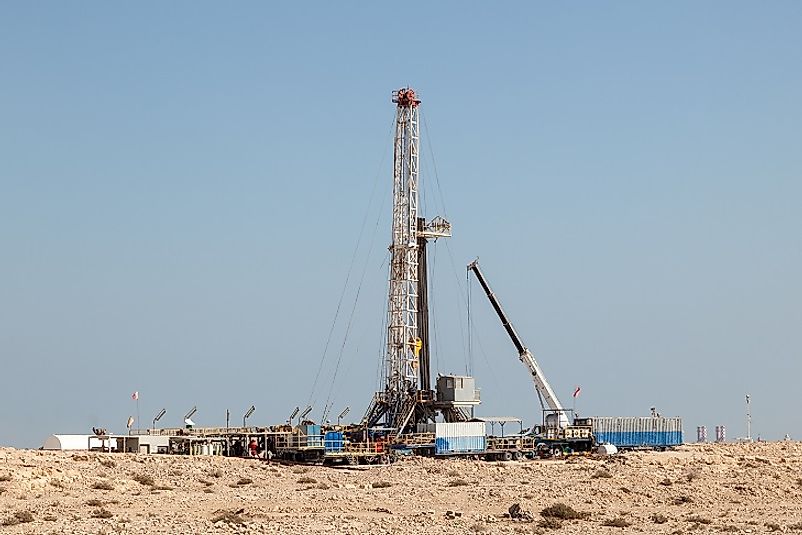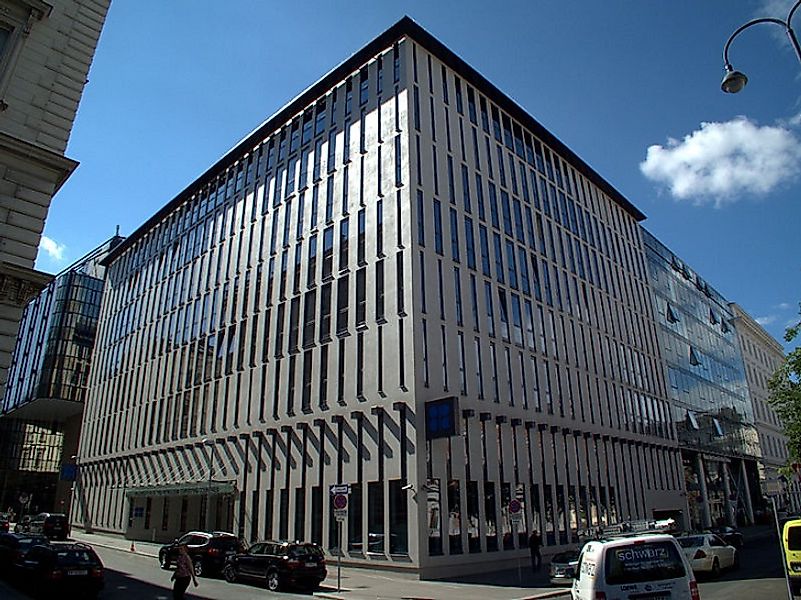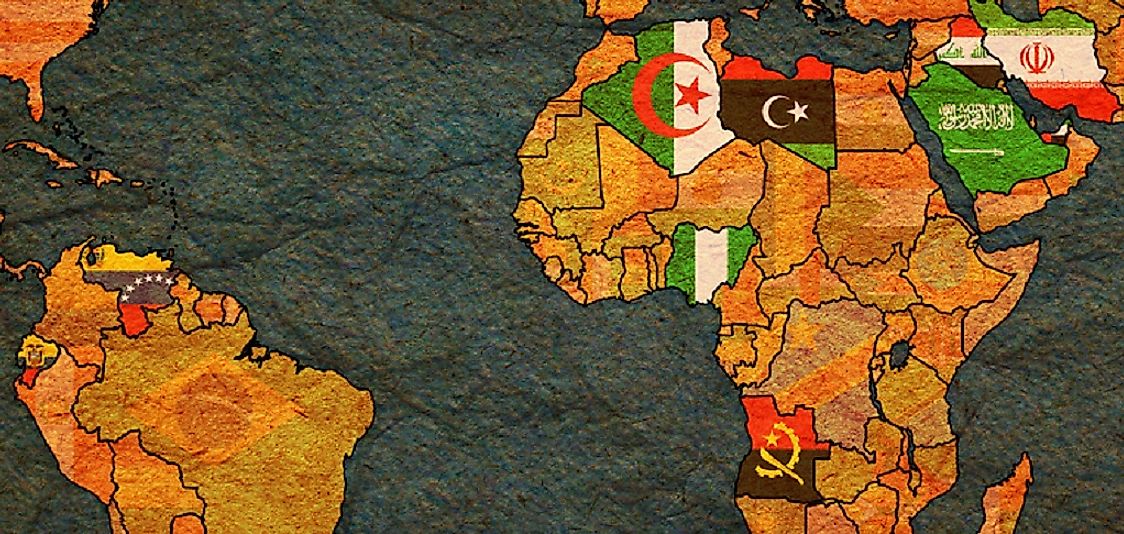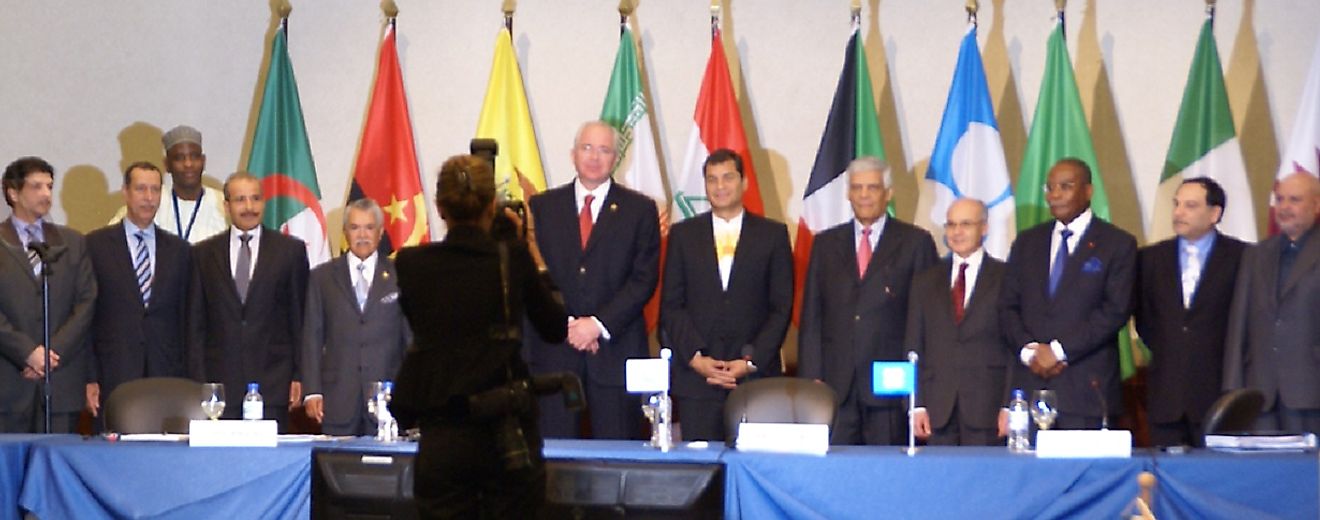Organization Of Petroleum Exporting Countries (OPEC)

5. Overview and Member Countries

The birth of the Organization of Petroleum Exporting Countries (OPEC) was a response by the founding member countries to prevent the multi-national oil companies from manipulating crude prices. The intergovernmental organization was formed in 1960 by five major oil producers, namely Iran, Iraq, Kuwait, Saudi Arabia, and Venezuela. OPEC’s stated purpose is “to coordinate and unify the petroleum policies of its member countries and ensure the stabilization of oil markets.” As of June of 2016, its other members are the United Arab Emirates, Ecuador, Algeria, Angola, Libya, Qatar, Nigeria and Indonesia. Initially based in Geneva, OPEC’s headquarters moved to Vienna in 1965 (pictured above). Two-thirds of OPEC’s oil reserves are in the Middle Eastern countries around the Persian Gulf. Saudi Arabia, being the largest producer and exporter of all, is the de facto leader of OPEC.
4. Organizational History
In 1949, as the world was recovering from World War II, Iran and Venezuela invited Iraq, Kuwait, and Saudi Arabia to improve coordination among the major petroleum producing countries. In the Middle East, some of the largest oil fields were about to start production. The world market was dominated by seven multinational companies, five of which were headquartered in the United States, the largest producer and consumer of oil. These companies controlled oil operation and prices of the exporting countries and leveraged enormous political influence. When the companies unilaterally reduced their prices for Middle Eastern and Venezuelan crude oil in 1959, the oil minister of Venezuela, Juan Pablo Perez Alfonso, and his Saudi Arabian counterpart, Abdullah Tariki, called for an “Oil Consultation Commission” of exporting countries, which would first approve price changes. After the companies again reduced Middle Eastern Oil prices in the following year, Perez Alfonso and Tariki organized the Baghdad Conference in September of 1960 to increase crude oil prices of their countries and to respond to unilateral actions of the multinationals. OPEC was the direct result of the conference.
3. Domination of the Global Fuel Market

The creation of OPEC saw the beginning of national sovereignty over natural resources. Since then, OPEC has come to play a crucial role in international relations. In the 1970s, when OPEC member countries restricted oil production, prices soared with long interruptions in supply, with long-lasting effects for the global economy. In 1973, the Middle Eastern members of OPEC, along with Egypt and Syria, declared an oil embargo the western countries as a result of the Yom Kippur War. Prices rose dramatically and disrupted the economies of the U.S. and U.K., who had to implement programs of petroleum rationing. Even after the embargo ended the following year after intense diplomatic efforts, prices continued to rise. The world went through a recession, signaling an end to the Post-World War II boom. In December of 2014, Lloyd’s ranked “OPEC and the oil men” third on the list of “the top 100 most influential people in the shipping industry”.
2. Challenges and Criticisms
Beginning in earnest in the 1980s, OPEC began setting production targets for its member countries. Reduced targets and production have the general tendency to increase prices. OPEC countries often have difficulties in agreeing on policy decisions because individual nations have their own compulsions and priorities. The countries also differ in production and export capacities, costs, reserves, population and economic and political exigencies. Poorer member countries usually push for lowering exports to raise prices and reserves, which go against Saudi Arabia’s strategy to ensure a steady flow of oil to all countries for global economic expansion. At times, OPEC members have allegedly acted as a noncompetitive cartel because of the organization’s decisions about oil production and price levels. In fact, economists have gone to the extent of describing OPEC as a textbook example of a cartel that manipulates prices by avoiding and reducing competition. Anti-OPEC sentiment has been so high among U.S. lawmakers that they sought to pass laws to limit the sovereign immunity of OPEC members and bring them under the sphere of Federal laws regulating competition.
1. Prospects for the Future

Industrialized countries began to take efforts in the 1980s to reduce their dependence on OPEC oil and the consumption of fossil fuels in general. Commercial exploration revealed major oilfields in Alaska, Siberia, the North Sea, and the Gulf of Mexico. Subsequently, worldwide demand for crude dropped by 5 million barrels per day, and non-OPEC production eclipsed OPEC’s market share. The Middle Eastern conflicts of the 1990s and 2003 had little effect on oil production or prices as OPEC members agreed to ensure steady supply. OPEC countries steadily exceeded their production targets and by 2015, supply exceeded demand, drastically bringing down prices. As other oil producing countries trimmed output, raising prices to a more realistic level, the world expected OPEC to cut production quotas at their 2016 conference in Vienna, but the organization decided to maintain the status quo and let market dynamics restore the balance itself in due time.











